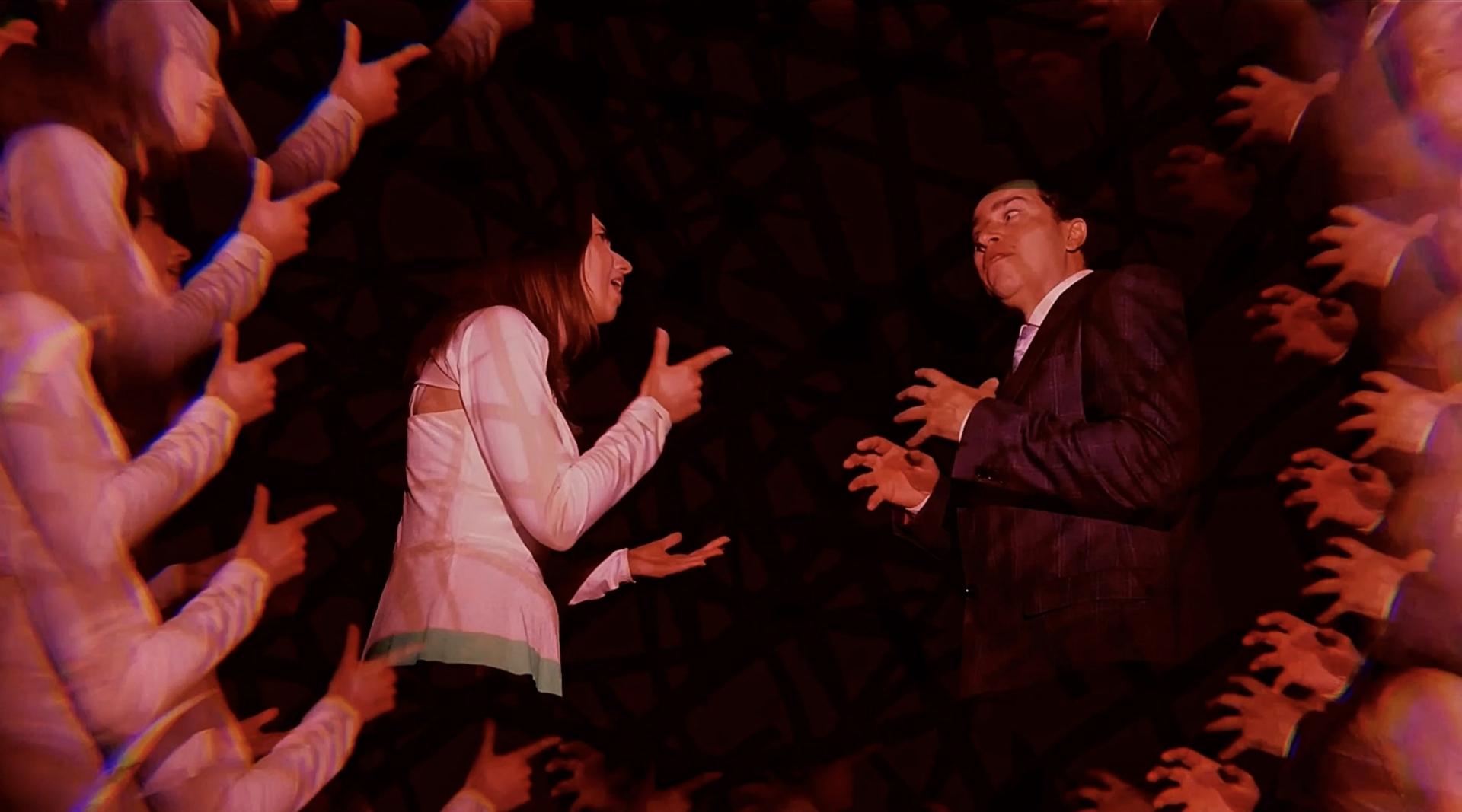This Pitiable Façade was directed, written, edited, and produced by Saffron Mamujee, with Melfin Pereira serving as production designer, illustrator, animator, and director of photography. The purpose of this film is to call attention to the issues that the world faces with relation to technology advancement, leadership dependence, credulity, accepting society as a herd of sheep, and acceptance of poor mental health as normal. With ease, the poem glides into each problem, addresses it, and then moves on to the next. The poem recognises a rapidly deteriorating society in which the people have little influence other than to simply watch the catastrophe. It is not intended to solve these issues.
This Pitiable Façade is an experimental spoken word film that centres on a young woman who is investigating nihilism while looking for solutions to contemporary global challenges like leadership, economic hardship, and tech dependence. ‘The establishment’ is represented by an older male character who follows. Each character argues their side of the argument, seeking to convince the other that theirs is the strongest. The film ends because neither person can understand the other’s point of view. In the end, the audience is seeing an ongoing discussion with no clear conclusion.
The British spoken word artist Kae Tempest, whose poetry tackle materialism, poverty, and intense emotions, served as an inspiration for the writing. The protest song “Europe is Lost” by Tempest, which portrays an isolated and corrupted society, has a similar tone to This Pitiable Façade. This Pitiable Façade moves along quite quickly while conveying the intense feelings, fear, and wisdom that both characters amass. We wanted to include some enigmas or rhetorical questions because of the unresolved finale, like do you side with the man? Do you support the young woman? Both? Neither? In the end, no one cares; the choice is yours.
There are two forms of visuals in the film. We utilised a projector to show images that corresponded to the lines of the poem, including Melfin’s animations and illustrations as well as footage we had taken of actual events. We used four separate cameras to film the characters after projecting these images onto them and the walls behind them. The characters are filmed at a slower speed than the projections, creating a visual contrast for the eyes. In order to provide viewers the option of listening to either side of the debate, we also decided to pan the audio in post-production. Although the film is meant to be watched with headphones, it can also be effective without them.
Saffron and Melfin are both aspiring writers and directors who have prior expertise in various production sections.


